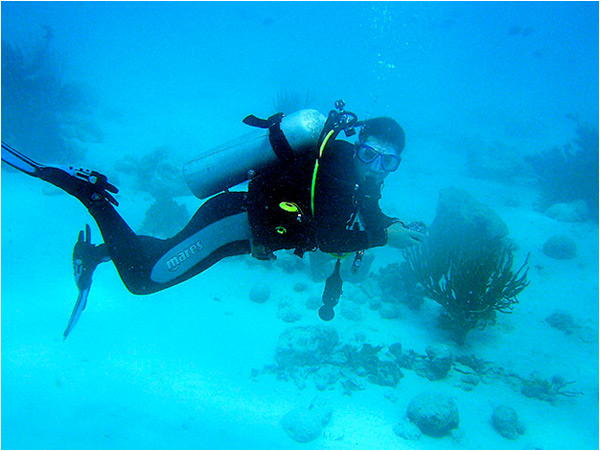
Source: Robert Boyle, Nicholas H. Clulee, Michigoan Tech University Chemistry department
Boyle's law describes the relationship between pressure and volume of a gas when the temperature is held constant. It is named after Robert Boyle of Ireland who published it in 1662. Two of Boyle's friends who were amateur scientists (Henry Power and Richard Towneley) discovered that the pressure and volume of a gas are inversely proportionate. Boyle's two friends brought this information to his attention, He and his assistant, Robert Hooke, began a scientific study of the pressure and volume of air, confirming this relationship.

Source: Robert Boyle, Nicholas H. Clulee, Michigoan Tech University Chemistry department

Source: Diver at Bonaire, aa7ae, Flickr
Scuba diving is a sport that many people all over the world pursue because of the thrills it has to offer. Beautiful coral reefs in crystal clear water, colorful tropical fish, and close encounters with sharks and eels are only a few reasons why this sport has become so popular. The success of a scuba diving trip is dependent on chemistry. That's right! Scuba divers must know about chemistry to make their diving experience a safe one.
At sea level we are used to 1 ATM(atmosphere) of pressure exerted on our bodies from the air surrounding us. Normally we don't notice that pressure on us because our bodies are primarily made up of liquid. Remember, from the properties of matter that liquids are basically not compressible. One place you do notice changes however is with your ears. We have air space behind our eardrums. Air, being a gas is indeed compressible. This is why your ears pop when you change elevations from driving up mountains or flying. Pressure changes in the atmosphere will make the volume of air behind your eardrums contract or expand.
Water exerts pressure as well. The deeper you are under water, the more pressure the water exerts. All of this pressure has an effect on gasses since gasses can be compressed.